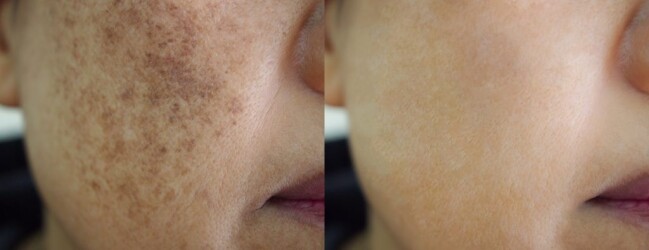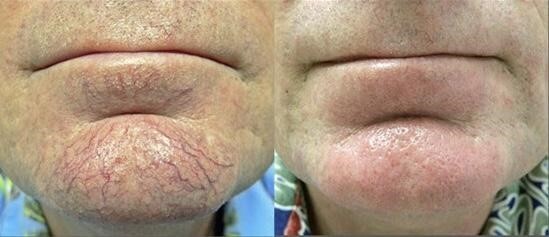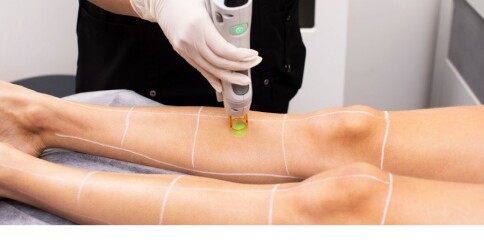The letters in the word "laser" stand for Light Amplification by Stimulated Emission of Radiation. A laser is a single-wavelength (one color of light) source of high-energy light that can be accurately focused to transmit that light onto a tiny area to achieve the desired effects.
Lasers are monochromatic, meaning a given laser emits light of only one wavelength.
Lasers work in cosmetic procedures through a selective photothermolysis process, which means that they modulate the frequency of light (photo) to produce heat (thermo) in the specific area that will be destroyed (lysis).
Lasers emit a light beam wavelength in sync with the target's color, whether they are brown spots, broken red capillaries, or another skin condition.
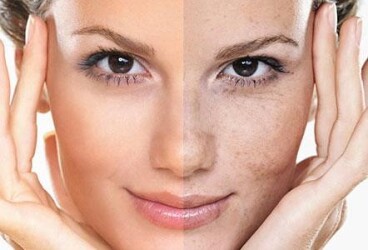
Ablative versus Non Ablative Lasers
There are 2 basic lasers used for cosmetic purposes: ablative and non-ablative
Ablative lasers vaporize the top layers of damaged skin, while non-ablative lasers work deeper in the skin without removing or damaging the top layers. For this reason, you will not have any downtime (the time when the top layers of skin heal) after having a cosmetic procedure that uses solely non-ablative laser technology.
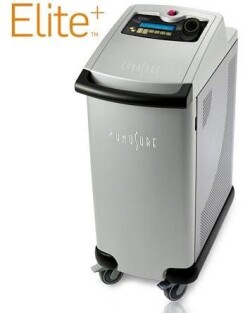
Types of Lasers for Cosmetic Procedures
These 2 basic lasers include many categories of laser types, hundreds of variations, and brand names.
The wavelength of the laser is the main difference between each type of laser, and the correct laser is chosen to target various skin issues. For this reason, your dermatologist may recommend a combination of several other lasers to address all of the problems you may have.
Fine Lines and Wrinkles
For treating lines and wrinkles, a combination of skin resurfacing and skin-tightening procedures can be used, or both can be accomplished with a more aggressive ablative laser, such as a CO2 (carbon dioxide) laser or Erbium lasers. The CO2 laser is also used to remove warts and skin tags and cut the skin in laser-assisted surgery.
Pulsed dye lasers have also shown some success, along with less aggressive non-laser, light-based treatments, such as intense pulsed light therapy (IPL) and light-emitting diode (LED) photo facials.
Skin Tightening
Most cosmetic laser procedures provide at least some level of superficial tightening because they produce a controlled skin injury, encouraging increased collagen production. However, CO2 lasers are the laser of choice for more significant tightening results.
In addition, non laser, light-based treatments, such as Titan infrared devices and Thermage radiofrequency-based systems, have been successful.
The pulsed dye lasers are most commonly used to treat pigmented lesions, such as sunspots, age spots, melasma, and other forms of hyperpigmentation.
Nd:YAG (neodymium-doped yttrium aluminum garnet) lasers and fractional CO2 lasers, along with non-laser, light-based treatments, such as IPL also used for pigmented lesions.
Vascular Lesions
Vascular lesions include broken blood vessels on the face, unsightly spider veins on the legs, spider nevi, hemangiomas, and certain birthmarks such as port-wine stains.
For these types of skin irregularities, IPL is a common choice because it is minimally invasive. Also popular for treating these lesions are the pulsed dye, Nd:YAG, and diode lasers.
Unwanted Tattoos
The Q-switched laser and Nd:YAG remain popular for tattoo removal, and IPL can work as another option.
Unwanted Hair
The success and safety of laser hair removal are highly dependent on the pigment present in the skin and the type of hair being treated.
For darker-skinned individuals, the Nd:YAG and diode lasers are often the lasers of choice, and for lighter-skinned people, IPL has proved effective.
Acne and Acne Scars
For deeper acne scars, the CO2 laser remains the gold standard. Recent developments such as the erbium:YAG, fractional laser, and specific non-ablative lasers have shown considerable success in treating superficial acne scarring. LED technology has proven to be quite effective for treating active acne.


